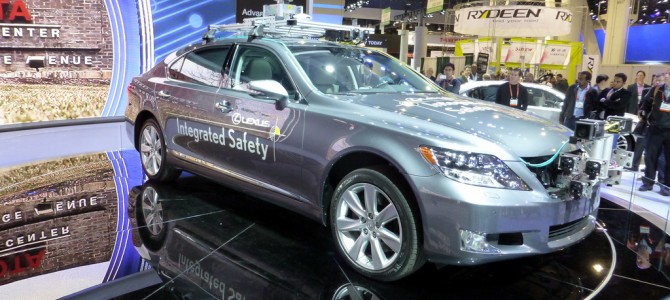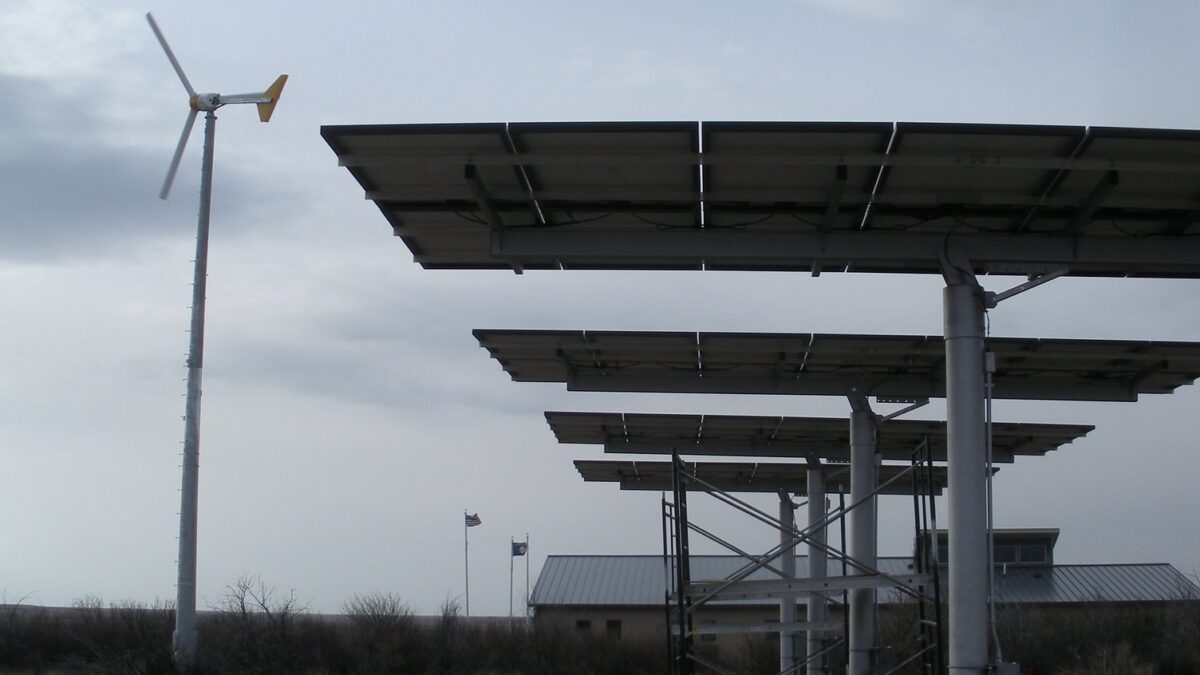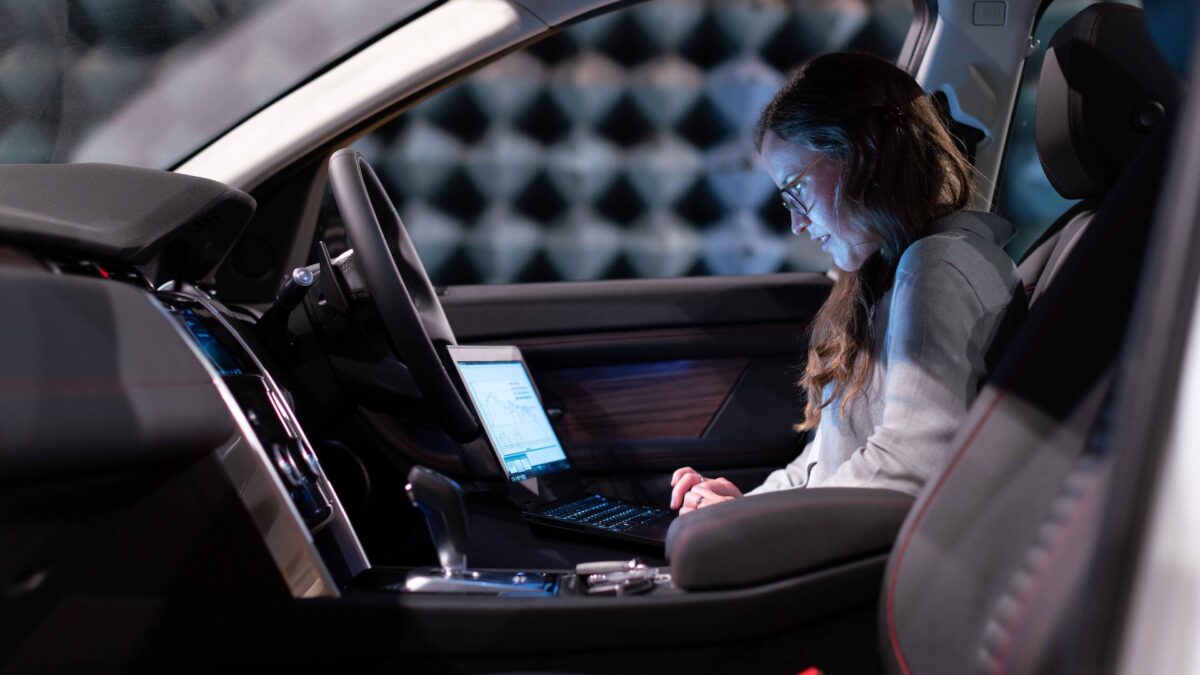
It’s the hot new gadget idea: the driverless car. Tech writers are fascinated. Trend watchers hail it as the leading edge of a wider movement towards robots promising to improve on what humans can do. Newt Gingrich, ever the futurist, is over the moon. Google has a tiny, adorable prototype best described as “a driverless golf cart”:
In the short run, the road to a future of driverless cars looks bumpy. Technical hurdles remain, and like many such innovations, the driverless car will first hit the market at high-end, early-adopter prices. The first driverless cars will likely not be truly driverless, but will require a licensed and capable driver able to override the steering computer in case the car gets lost or is in danger of an accident.
New technologies also always prompt a certain amount of suspicion and anxiety. Our fear of the destructive power of automobiles is well-founded: motor vehicle accidents, mainly car accidents, are perennially the number one cause of non-natural death in the United States, especially among young people. Some flaws in the driverless technology may not be fully apparent until they are put to a real road test. Machines can react faster and more predictably than human beings, but mixing machines and humans on the same road is likely to lead to unpredictable kinds of accidents, even if the machines function as designed. And in the event there are accidents and people are injured or killed, it remains to be seen if the driverless car manufacturers will be eaten alive by the personal injury bar, technology-averse juries, and Luddite legislators and regulators before the industry even gets off the ground.
But that’s the short run. If truly driverless cars can be made to work reliably and sold at economical prices, and if they are not driven from the market by product liability lawsuits, they could have a dramatic effect on our society. Let us count the ways:
1. Fewer Car Accidents: This is where it all begins. For all the sales pitches on convenience and novelty, the real benefit of driverless cars for drivers and society is the promise of drastically reducing the number of accidents causing death, injury and property loss. Estimates of those costs vary—one recent study pegged the financial cost to Americans at $871 billion a year, including “594 billion in societal harm from the loss of life and the pain and decreased quality of life because of injuries.”
NHTSA’s study…focuses on some of the behavioral factors that contributed to [2010’s] 32,999 highway fatalities, 3.9 million injuries and 24 million damaged vehicles. It found that just three driver behaviors, speeding [24%], drunken driving [23%] and distracted driving [15%], accounted for 56% of the economic loss to the nation and 62% of the societal harm (bold added).
Even discounting that figure for bureaucratic self-interest, we’re talking about very large costs in both human and economic terms, costs that fall disproportionately on the young and healthy (and their families and friends), and are caused primarily by driver misconduct or error. Without human drivers who drive drunk, drive tired, drive distracted, drive while texting or on the phone, drive too fast, drive angry, et cetera, we should see a great reduction in car accidents. Most likely you’ve been personally affected by a death or injury from a car accident; most of us have. A truly driverless road would not be accident-free, given the number of accidents that would still be caused by mechanical and computer errors, weather conditions, pedestrians, bicyclists, motorcyclists and sheer random chance. But it would make the now-routine loss of life and limb on the roads far rarer.
2. Revolutionizing Car Design: To an enormous extent, the design of cars is built around the needs of the driver. Start with the windshield: the front of the passenger compartment, close to the first two people in the car, is a large and vulnerable piece of glass. No matter how many technological advancements have been made in windshield construction, shattered windshields and people being launched through them remains a major cause of injury and death. (I’ve experienced the hair-raising situation of having a large bird slam into my windshield hard enough to break it). And windshields are one of the hardest, yet most essential, parts of a car to keep clean, requiring among other things regular replacement of the wipers.
But a driverless car does not need a windshield (it will have exterior cameras/sensors to watch the road, the way some sensors now watch the bumpers), nor does it need to situate seats facing forward near the front. The person in charge of getting the car to its destination can sit anywhere and check the directions and the road from a monitor. Once you move away from the need to have everything within arm’s reach of the driver’s console, other design changes follow. Air conditioning, GPS, stereo, and video systems can be controlled from anywhere within the car. And debates over things like stick shift versus automatic transmissions become pointless without the human driver.
Then there’s safety. The current tug of war between heavier and therefore safer cars against lighter and more fuel-efficient cars could be revolutionized if we transition to truly driverless roads, which would likely see far fewer accidents and in particular far fewer high-speed accidents. Safety isn’t the only reason for big cars—there’s also a need for space for kids and cargo—but it’s a major consideration and one that will be less urgent as people acclimate to reduced risk of accident.
The flip side, however, is that people freed from the stress of driving and liberated from the fear of accidents may gravitate more towards the mobile-home/RV/stretch limo model of the car as a traveling living room, full of creature comforts and space to move around, use the bathroom, grab a drink, cook meth, or whatever. The result could well end up accelerating the current social divide between childless city-dwellers traveling in tiny, slow-moving foam beta-mobiles and suburban and rural families hauling about in huge road hogs.
3. Changing The Layout of Roads and Traffic Patterns: Beyond cars themselves, the design of roads and traffic today are built around the human needs and human behavior of human drivers. That means lots of road signs, lane markers, and street lights, and the need to keep trees and hedges from obstructing the visibility of corners. It means dealing with how human drivers merge and change lanes (badly), how they make right and left turns in traffic (differently), how they adapt to different weather conditions (inconsistently) and how they obey speed limits, traffic lights and stop signs (sporadically). It means adapting to drivers from around the world who speak different languages, measure distance and speed using different measurements, and are accustomed to driving on different sides of the road.
All of these things can change when the drivers on the road are predictable machines rather than unpredictable humans. Speed limits can be safely raised when cars are driven with machine reflexes, machine predictability and machines’ programmed ability to obey the limits. Planners can finally achieve their dream of getting cars to merge in optimal and cooperative patterns, ending road-rage-inducing snarls. Public safety concerns can focus on road surfaces rather than visibility. Intersections can be reworked with the confidence that every car on the road will obey the rules. Even concerns about suburban sprawl may be reconsidered in light of the changes (discussed below) in how car transportation functions as part of the workday. The possibilities can test the imagination of public planners for years to come.
4. Changing Who Can Drive: Driving, today, is a hallmark of responsible adulthood. Getting a driver’s license at 16 or 17, and learning to safely operate a motor vehicle, is a major rite of passage. High schools spend teaching time on Driver’s Ed. Driver’s licenses are the most widely-used form of photo identification, and whether the government should issue them to people who are in the country illegally is a continuing source of political controversy. People with serious physical or mental handicaps cannot drive. People who have had too much to drink, or are high on drugs or heavily medicated, cannot or should not drive. And at the other end, for the elderly, losing the ability to drive when their eyesight and reflexes fail can be a major blow to their independence.
None of these things need be true of a driverless car. A child old enough to ride a bicycle or take the subway unescorted could be old enough to take a driverless car trip, especially assuming (as discussed below) improvements in anti-theft technologies and the impossibility of even moving the car without being tracked. The elderly and the handicapped could gain greatly from the increased mobility and independence of being able to use a driverless car to go places and shop for groceries. On the other hand, the demise of the driver’s license creates challenges for the many ways in which it is used as a de facto identification card, and could create pressure for a new federal identification card.
5: Altering the Legal and Insurance Landscape: Auto insurance and auto accident lawsuits are a multi-billion-dollar business, as even a caveman or a lizard could tell you. Indeed, the risk of accidents is why states mandate that drivers carry insurance, for which many drivers might otherwise decline to pay. Eliminating drivers and the accidents they cause would unsettle this vast business enterprise in numerous ways, likely downsizing car insurance companies and redirecting lawyers towards suing manufacturers.
6. Lowering The Drinking Age: One of the major arguments for the 21-year-old drinking age—indeed, the justification upheld in 1987 as Transportation Secretary Elizabeth Dole’s basis for imposing that drinking age on any state that receives federal highway funds—is to reduce drunk-driving fatalities. Arguments against impaired driving are also a major component of the case against legalizing marijuana. But what if drunk and stoned college kids never had to drive? The driverless car could unsettle these public policy debates by removing an important trump card in arguments against individual liberty and individual responsibility. (Reductions in auto accidents could have a similar effect on seatbelt laws).
7. Destroying Car Culture: Here we move from the specific to the general, because cars, in America, are not just an appliance. They represent a deep expression of how American culture expressed and asserted itself in the 20th Century. Cars meant independence, and the bond between an American—particularly an American man—and his car was deep and profound, the subject of numerous songs and movies. People drive for fun, to see places, to get away, they tinker with their cars, love their cars, and argue about their merits. That bond will inevitably be lost in a world where the car is no longer controlled and steered by the individual, but is simply a delivery service for a requested address.
Sentiment aside, this is the cost of progress. In the 19th Century, we had a horse culture. Horses were the companion of the settler, the wagon train, the cavalryman, the cowboy. Even if you lived in a big city, where people traveled by carriage and goods were delivered by horse-drawn wagons, most every American knew some of the basics of horsemanship: how to mount a horse, win a horse’s trust, command and steer a horse, and re-shoe a horse at need. Today, horsemanship is the province of the very rich, the very rural, and those who make a living dealing with horses, and is alien to most Americans. In time, the same will be true of car culture—the wealthy will race on private tracks, the country boys and girls will drive off road, but the rest of us will be escorted around by machines without thought for how to drive them. We may not even be able to foresee all the ways that changes how we view our own lives and the culture we live in.
8. Degrading Military Preparedness: An extension of the loss of car culture is that young people who grow up without the experience of driving and tinkering with cars will be less prepared to do so in the military. Our society is already facing declines in many of the life skills that we have taken for granted in the past as contributors to making good citizen-soldiers: physical fitness, marksmanship, self-reliance, outdoorsmanship. Cars in civilian life can be driverless because they follow roads, maps, and rules, but none of those are characteristics of the battlefield, even in urban combat. Military vehicles also need to constantly react to threats far less predictable than traffic. Of course, our military relies more these days on remote-controlled vehicles like drones that can be driven by the children of the video-game age, and it will always require skills (like many of the tasks on an aircraft carrier) that need to be taught because they have no real civilian counterpart. But a driverless society will make driving in combat one of those.
9. Extending Telecommuting: Mobile technology has made working remotely vastly easier, but today, working during your commute has real hazards and drawbacks. It’s hard if you take mass transit: you can’t do business calls on a crowded train, you can’t get a wireless signal in subway tunnels, you can’t spread out your papers when you’re changing buses. And it’s hazardous if you’re driving to text or even talk on a cell phone (even with a hands-free setup, some studies estimate that dialing your phone is just about the most dangerous thing you can do while driving). But a driverless car avoids all those obstacles, allowing the car to be turned into a mobile office, maybe even one with a fully-equipped mobile workstation. For jobs that require a lot of traveling, that could be an enormous blessing. For workers who want to lose less of their family time commuting, it offers the promise of a shorter day in the office. But for workers who prize the solitude of the interval between home and work, it could mean one less excuse to turn the phone off and have some alone time.
10. Eviscerating Drive-Time Radio Ratings: A corollary of the ability of car commuters to spend more time sleeping, watching TV, reading, talking on the phone, texting, or working on a computer is less time in which their only entertainment option is the radio. Radio programmers depend on commuters: drive-time morning and evening radio are consistently the biggest ratings producers, the anchors of any commercially successful radio station. No drivers, no drive time.
11. Destroying Taxi and Driving Jobs: Driving provides a lot of jobs, mostly jobs held by men, and in the case of urban taxi and limo drivers, many of them immigrants—cab drivers, truck drivers, delivery drivers. Those jobs can be hazardous: one Labor Department study in the 1990s, examining the nation’s population of 3 million truck drivers and 200,000 cab drivers at the time, concluded:
From 1992-95, truckdriving had the most fatalities of all occupations, accounting for 12 percent of all worker deaths. About two-thirds of the fatally injured truckers were involved in highway crashes. Truckdrivers also had more nonfatal injuries (over 151,000) than workers in any other occupation in 1995…Cabdrivers had the highest homicide rate—32 homicides per 100,000—among the occupations most affected by deadly violence. This rate is four times more than that of police officers (emphasis added).
Driverless cars and trucks won’t eliminate these jobs entirely, particularly jobs of deliverymen who will still need to bring groceries, the U.S. mail, and UPS and FedEx packages to your doorstep. But they will undoubtedly reduce employment, especially among cab drivers, and reduce the hazards of those jobs (and the higher pay that comes with taking those risks). Along those lines, eliminating the need to constrain trucking by the limits of human endurance promises the potential for a faster network of distribution of goods.
That provides both a risk and an opportunity for a business like Uber, which is already trying to disrupt the taxi paradigm. The risk is that driverless cabs, like the Zipcar and CitiBike programs, will become widely available (and no longer constrained by the taxi-medallion monopoly), while Uber’s potential pool of on-demand drivers shrinks. The opportunity is that someone still needs to provide the supply of on-demand vehicles.
12. Eroding Privacy: Once upon a time, hopping in the car and hitting the road meant anonymity. You could go anywhere, go much further than you could get by horse, and not have your movements tracked. Today, the ubiquity of the GPS and the toll-collecting EZPass have already massively eroded that assumption, but the driverless car, utterly dependent on the GPS, will put it entirely to rest. Wherever you go, the machines will take you there, and remember that they did.
13. Revolutionizing Law Enforcement: The good news for law enforcement in a driverless world is the accessability of that GPS data, and more generally the ability to redeploy resources away from traffic enforcement and prosecution of drunk drivers to combating more intentional crimes. Then again, the need to speed, break rules, and react unpredictably on the road may mean that law enforcement and EMS vehicles continue to use human drivers on the road, or at least more commonly use emergency systems for overriding the navigational computers.
But there’s a hidden double-edged sword in eliminating drivers: the death of the traffic stop. For some communities, speed traps are a major source of municipal revenue. And for police everywhere, traffic stops occasioned by drivers in violation of traffic rules can be a major source of arrests for drug trafficking and other crimes. Read the last several decades’ worth of Fourth Amendment cases and consider what a vast proportion of them originated with a traffic stop. If you’ll lose privacy when the police can more easily track your car’s movements, you may gain some when they lose their most common reason for searching your car’s contents.
That may have collateral effects on how we view law enforcement. For most middle-class or wealthier Americans, especially outside big cities, traffic stops are by far their most frequent adversarial interaction with law enforcement. Take away the experience of speeding tickets and DUIs or DWIs, and a lot of Americans may end up less concerned with privacy issues and less empathetic to complaints about the police.
14. Reducing Car Theft: This is a second-order effect, but so long as a car is controlled by a driver, it needs to be operated manually; the more it is run by a computer, the easier it becomes to password-protect the car’s navigation system. That may make it a lot harder to steal unoccupied cars but, like ATM passwords, could also encourage more car thieves to take up carjacking to ensure they can get the passwords. And of course, a car that can go nowhere without GPS cannot go far without police following it. (We are also likely to see the death of the highway chase, to the sadness of cable news programmers).
15. Fewer Used Cars, More Inequality: The more cars involve electronics rather than simple machinery, the costlier they are to design and repair, and the shorter their likely shelf life. That’s bad news for poorer people who want to own one. Traditionally, the low end of the used-car market was a haven for men, especially young men, who had little money but had the know-how to keep a fading piece of machinery running for a few more years. Doing that with the kind of sophisticated computer systems and pricey components needed to run driverless navigation systems is something a lot fewer young men, especially the less educated, are prepared to do.
16. Increasing Vulnerability to Terrorism and Natural Disasters: Cars have rarely been terrorist targets for an obvious reason: they’re dispersed and separately controlled, and can scatter in the face of danger in ways that densely packed plane, train, and bus passengers cannot. But what happens when all the cars on the road are controlled by the same satellite navigation system? Any network administrator or sci-fi fan can tell you: centralization means more vulnerability both to deliberate disruption and to things like natural disasters that put those networks offline when they are needed most. As I noted after Hurricane Katrina, the people in New Orleans who owned cars and didn’t need to rely on government to help them evacuate fared a lot better. But what happens in a future disaster when the cars won’t react properly or don’t recognize that some roads are not functional?
17. Flying Cars? Allow me one flight of fancy here at the end. The technology for Jetsons-style flying cars as an economical mass transportation tool remains far in the future for now, not that much closer than it was in the 1960s. But human-piloted flying cars would be a nightmare for governments and traffic planners. Air traffic today is heavily regulated and controlled by orders and flight plans under the government’s thumb, and trying to bring ordinary citizens’ commutes under that regulatory umbrella would be a Herculean undertaking. But if you start with the assumption that the car is a machine that already reflexively follows orders and patterns, the potential for three-dimensional roads becomes a lot less scary and more a matter of simply solving the technological challenge. Spacely Sprockets, here we come!
* * *
All of the above are guesses based on current realities. Projections of the future are always uncertain, and small variations in what is technologically possible can have large impacts on what happens socially. But we know this much: in a world of driverless cars, a lot will change with the disappearance of drivers, for good and for ill. The possibilities and the risks are only beginning to dawn on us.









